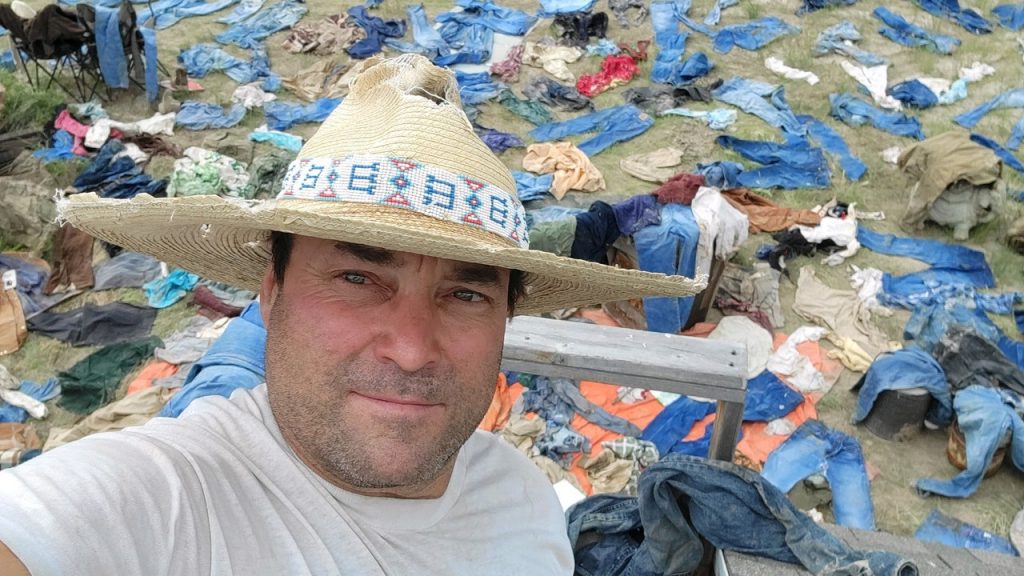
Denim Hunter Brit Eaton Is the Indiana Jones of Old Jeans
After he got in a fight with his fishing-boat captain, was fired, and went broke, he made denim-hunting his full-time career and expanded his search. A friend hooked him up with a connection at a secondhand store, where Eaton bought a 3,000-pound bale of Levi’s. On another occasion he took a wrong turn driving home and came across a cavernous warehouse piled high with old clothes.
“I pull over and it’s a rag house, with this guy sending all this shit to Haiti,” Eaton says. “But they don’t want denim because it’s too hot. I was able to dig through the discards and load up my truck for 25 dollars every time I went, because otherwise the guy was taking it to the trash. I turned every 25-dollar stop into $2,000, selling to my contacts in Europe.”
Business was underway, but Eaton wanted to find more profitable, older denim. “I didn’t get the same dopamine rush from a pair of 1980s jeans anymore, so I went to go find 1970s jeans, then 1960s, and so on,” he recalls. Unlike humid, wet Florida, desert states are ideal for preserving old denim. It’s hot and dry, so the material doesn’t rot, and, when abandoned for decades in mine shafts, old jackets and jeans are protected from light fading, too. Eaton had wanted to live out West ever since his childhood family trips to a Wyoming ranch: There, at the age of nine, he began to poke around the ranch dump, digging up relics like one of the first-ever license plates issued in the state. In 1997, Eaton decided to move West, picking Colorado on a whim.
Now, Eaton owns the rights to his very own deserted mine, one stuffed with pre-1910 trash that he describes as his “Big Rock Candy Mountain.” In another Instagram video, Eaton films himself on his knees, dramatically lit by a shaft of light as he digs into the wall of his mine. As dust gathers around him, he giddily excavates his treasure, a pair of dirty but otherwise perfectly intact “Popular Overalls,” a brand that he’d never heard of before, and which, without his intervention, would have been lost to time in the bottom of this shaft.
It isn’t all about digging underground, though. Wherever he goes, his eyes scan for denim. “I’m a total opportunist,” Eaton says, claiming he’s bought coveralls off a gas-station attendant in Africa, and fished a $500 pair of Levi’s out of a dumpster he happened to glance in while walking past. A steadier source of treasures has been the old homesteads that litter ranches and former ranches in the West. Much like digging through old mines and dumpsters, exploring old or abandoned properties is pot luck. Eaton might visit 20 properties in a day. If things look right, he might offer the owners $100 just to let him look around. Half of them might not let him inside, but when they do, Eaton estimates he can spend an average of $2,000 per house, but sometimes it could be as high as $10,000. He’ll try to make back his investment with the best five or so items. The others he might sell for as little as ten to fifteen dollars.